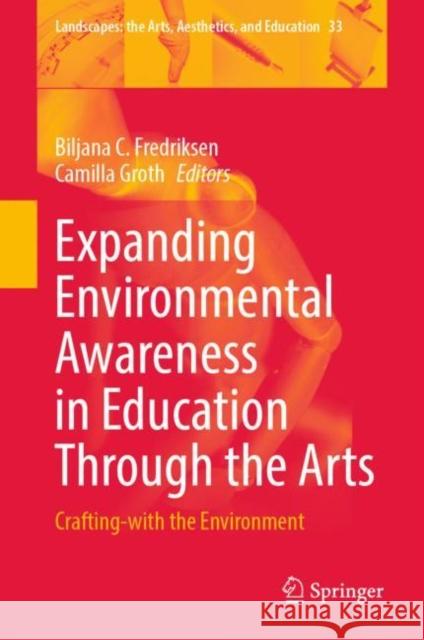Expanding Environmental Awareness in Education Through the Arts: Crafting-with the Environment » książka
Expanding Environmental Awareness in Education Through the Arts: Crafting-with the Environment
ISBN-13: 9789811948541 / Angielski / Twarda / 2022 / 240 str.
Expanding Environmental Awareness in Education Through the Arts: Crafting-with the Environment
ISBN-13: 9789811948541 / Angielski / Twarda / 2022 / 240 str.
(netto: 535,46 VAT: 5%)
Najniższa cena z 30 dni: 539,74
ok. 22 dni roboczych
Dostawa w 2026 r.
Darmowa dostawa!
This book presents diverse processes of crafting that bring humans, more than-humans and the environment closer to one another and, by doing so, addresses personal and educational developments towards ecological awareness. It discusses the human-material relationship, introduces posthuman theoretical entry points and reflects on the implementation of such theoretical perspectives in education. The practical examples of crafting-with the environment, the material practices and reflections posed in the book, provide insights into possible ways of levelling out human and material hierarchies.The chapters of this book give examples of artists' and crafts people's processes of thinking through materials and with materials, but also their reflections on how more-than-humans (animals and plants) craft from available materials, and how the environment and landscapes re-craft themselves through tedious processes of transformation. These case examples are founded on the authors' own experiences with phenomena they are trying to understand and critically explore.This book is of interest to professional creative practitioners, art and craft educators, art teacher educators or researchers in the field of creative practices. It has power to inspire rethinking of present educational practices, to ignite critical reflections about materials and more-than humans, and, hopefully, motivate transformations toward more ecologically sustainable ways of life.Chapters "Crafting in Dialogue with the Material Environment" and "Soil Laboratory: Crafting Experiments in an Exhibition Setting" are available open access under a Creative Commons Attribution 4.0 International License via link.springer.com.se via link.springer.com.
This book presents diverse processes of crafting that bring humans, more than-humans and the environment closer to one another and, by doing so, addresses personal and educational developments towards ecological awareness. It discusses the human-material relationship, introduces posthuman theoretical entry points and reflects on the implementation of such theoretical perspectives in education. The practical examples of crafting-with the environment, the material practices and reflections posed in the book, provide insights into possible ways of levelling out human and material hierarchies.











